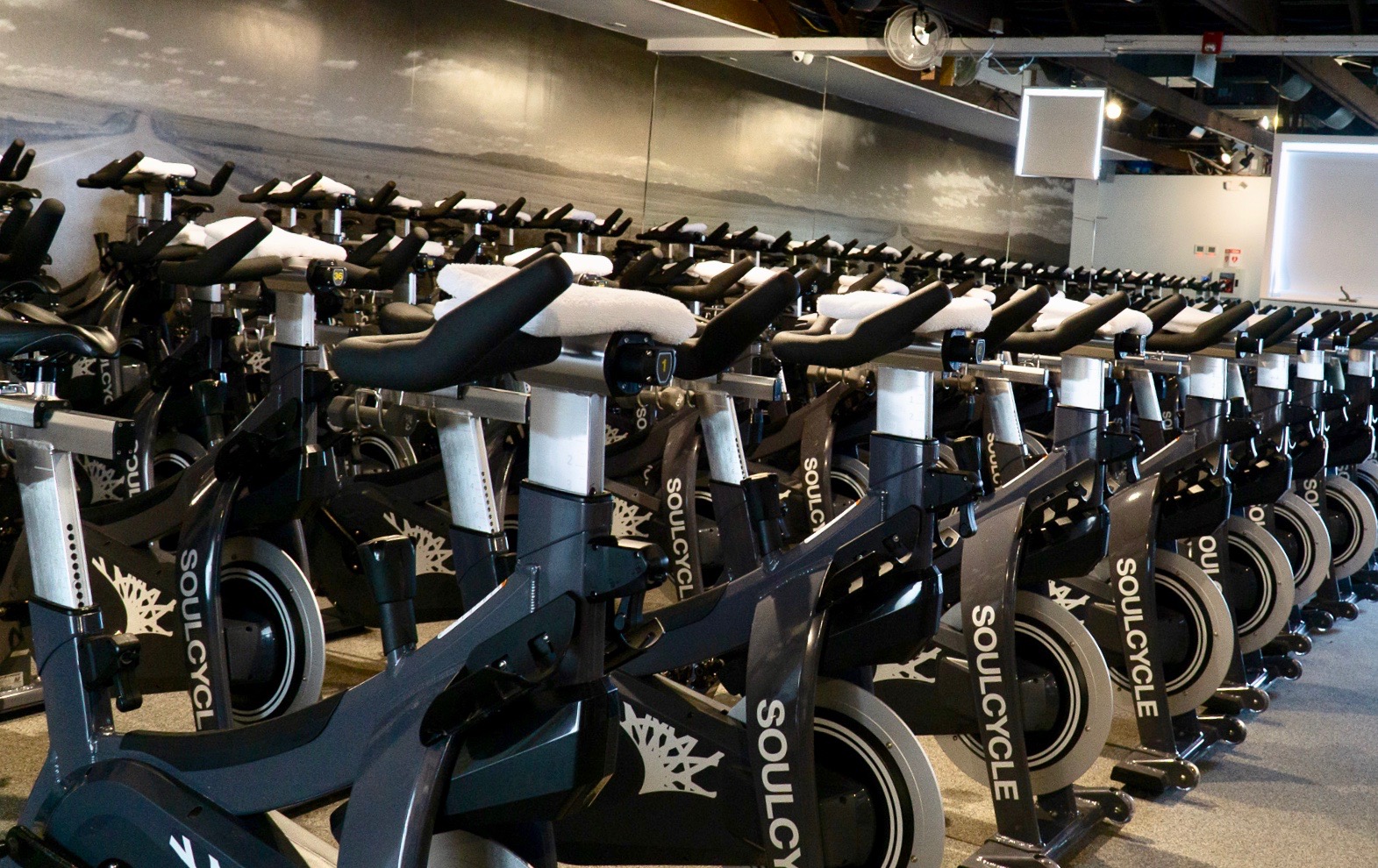As our Hamptons studio at the SoulCycle BARN gets busier with riders, we’re helping more and more clients get more out of every class, and participate in more rides.
Spinning has become a dominant force in the fitness industry. As its popularity increases, so does the necessity for understanding spinning’s impact on the body. These classes provide a great way to sweat, burn calories, and have fun while doing it. Yet as more time is spent on the bike, more pressure is put on the muscles tasked to complete the pedaling action. The muscles most affected by the repetitive motion, also happen to be some of the largest in the human body; your quads, glutes, and upper back musculature.
QUADS
The quads are broken up into four muscles, hence the name “quad”. The quad muscles assist with the extension of the knee and are used for activities like walking, running, and other physical activities like spinning. With the high intensity demands of spinning classes, extra strain can be placed on the quad and the various points at which they insert or attach. This increases the possibility of strain and injury in the knee, hip, and low back. As the quads become tight they are unable to extend the knee fully, placing greater strain on the knee, hip, and low back to complete the motion. Tight quads will also pull your pelvis down, creating a pelvic tilt. This will throw your low back out of alignment and produce low back pain. A great way to avoid these injuries is by getting stretched. LYMBR therapists can reset a pelvic tilt in less than 3 minutes, and our quad stretches restore mobility and function to the quadriceps. By creating greater function, we allow the muscles to better assist with the extension of the knee, thus removing stress on the knee, the pelvis and therefore the low back.
GLUTES
The glutes are made up of three muscles: The glute maximus, the glute medius, and the glute minimus. Each muscle serves an important purpose in spinning, primarily dealing with extension at the hip, or the downward “push” of your stride. The glute max is one of the primary movers in spinning and creates the “push” off the pedal. The glute medius serves as a pelvic stabilizer during dynamic movements. As the spinner lifts one foot up and drives the other down, glute medius holds the pelvis in a neutral position. This lessens the chance of a low back or pelvic injury. Glute medius can be especially tight for females due to women having anatomically wider pelvis. The glute minimus helps shift your body weight to keep you balanced while pedaling. To ensure the glutes are performing all of these tasks, it’s important to stretch and take your glutes through their full range of motion. Keeping the glutes loose will keep the pelvis stable while you ride, assist with balance, and will ensure that you are not compensating with other muscles to complete the hip extension.
UPPER BACK AND SHOULDERS
Although they’re certainly not as common, upper back and shoulder injuries can also occur from spinning classes. The upper back, specifically your traps, lats, and rear delts (shoulders), are responsible for holding your body upright as well as stabilizing the shoulder through dynamic movement. When people spin, they often get into the habit of hunching over the handlebars and tensing up their shoulders. What this does is lengthen these muscles to the point where they are no longer able to function. Since these muscles do so much to facilitate posture, as their function begins to waver, so will your posture. Your chest will begin to tighten as well as your core, your pelvis will tilt, and your shoulders will lose stability. By stretching out your chest, core, shoulders, and neck we can restore proper length to shortened muscles and therefore take pressure off your back and rear shoulders. This will help reaffirm correct posture and make your experience on the bike much more comfortable.
Spinning is a fantastic form of exercise. You can burn calories, exercise your heart, increase endurance, lower body fat, all while being a part of a larger community of people trying to improve themselves. Like any activity, however, it’s best to start slow, and always listen to your body. We all have activities we love to do. If spinning is yours, then why not make sure your body is in its most mobile, functional state so you can make the most of every class.
Written by Conner Fritchley, Stretch Therapist in our Darien studio.

